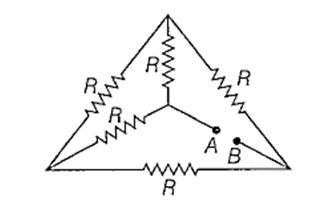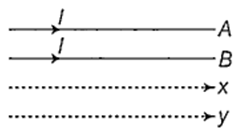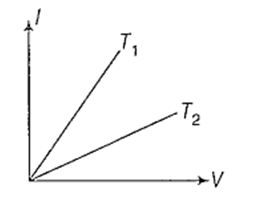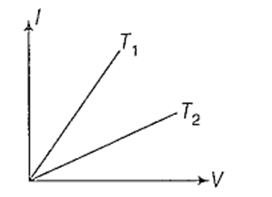 Multiple Choice Questions
Multiple Choice QuestionsThe resistance of an incandescent lamp is
smaller when switched on
greater when switched off
the same whether it is switch off or switch on
greater when switched on
An ammeter and a voltmeter are joined in series to a cell. Their readings are A and V respectively. If a resistance is now joined in parallel with the voltmeter, then
A will decrease, V will increase
A will increase, V will decrease
both A and V will increase
both A and V will decrease
If each of the resistance of the network shown in figure is R, the equivalent resistance between A and B is

3R
5R
R
A cell supplies a current of 0.9 A through a 2 Ω resistor and a current of 0.3 A through a 7 Ω resistor. The internal resistance of the cell is
1.2 Ω
2.0 Ω
0.5 Ω
1.0 Ω
A and B are two conductors carrying a current I in the same direction. x and y are two electron beams moving in the same direction. Then there will be

attraction between A and B, repulsion between x and y
repulsion between A and B, attraction between x and y
attraction between A and B and x and y
repulsion between A and B and x and y
The current-voltage graph for a given metallic conductor at two different temperature T1 and T2 are as shown in the figure. Then

T1 < T2
nothing can be said about T1 and T2
T1 = T2
T1 > T2
The current-voltage graph for a given metallic conductor at two different temperature T1 and T2 are as shown in the figure. Then

T1 < T2
nothing can be said about T1 and T2
T1 = T2
T1 > T2
